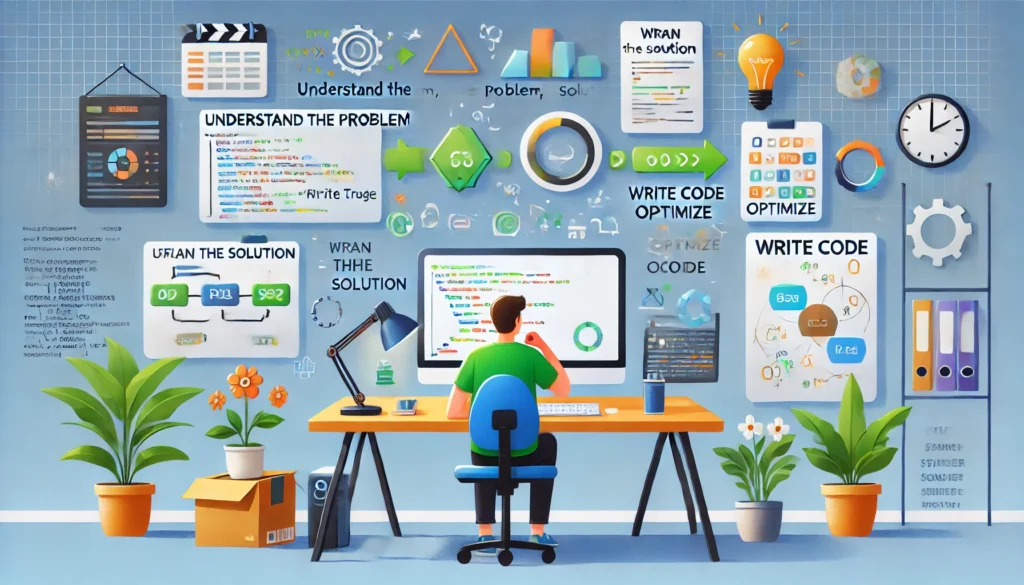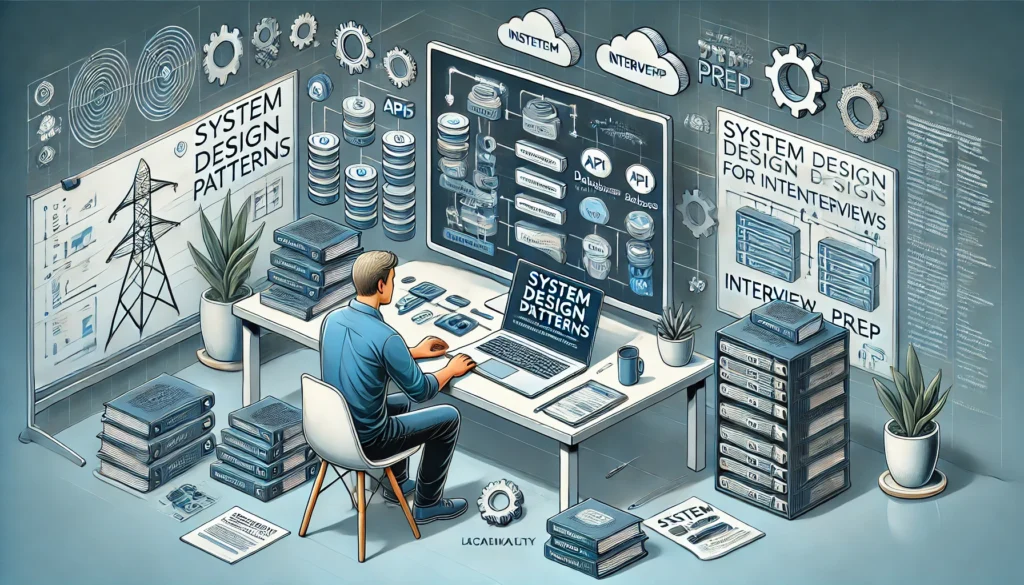Coding challenges are a key component of technical interviews, allowing employers to evaluate your problem-solving skills, coding efficiency, and ability to think on your feet. However, many candidates fall into common traps that can hurt their performance. Below is a list of common mistakes made during coding challenges and tips on how to avoid them.
1. Not Understanding the Problem Fully
One of the most frequent mistakes candidates make is diving straight into coding without fully understanding the problem.
Why It Happens:
In the rush to show their coding abilities, candidates may skim through the problem description and miss critical details.
How to Avoid It:
- Take your time: Before writing any code, spend a few minutes thoroughly reading the problem statement. Ensure you understand the input and output formats, constraints, and edge cases.
- Clarify doubts: If the challenge is part of a live interview, don’t hesitate to ask the interviewer for clarifications on anything unclear. In written challenges, read the problem statement multiple times to avoid misunderstandings.
2. Writing Code Without Planning
Jumping into coding without first creating a plan or considering the logic often leads to inefficient solutions, bugs, or incomplete code.
Why It Happens:
Candidates may feel pressured by time and want to start coding as quickly as possible to show progress.
How to Avoid It:
- Outline your approach: Spend time thinking through the solution. Sketch out the algorithm on paper or in pseudo-code to ensure that your approach will work before you begin coding.
- Break it down: Break the problem into smaller components. This makes it easier to think clearly and code each part efficiently.
3. Ignoring Edge Cases
Many candidates fail to consider edge cases, such as empty inputs, maximum constraints, or unusual data formats, which can result in incorrect solutions.
Why It Happens:
When under pressure, candidates tend to focus on the happy path (standard input and output cases) and forget to handle exceptions.
How to Avoid It:
- Think critically about edge cases: Before you start coding, list potential edge cases (e.g., empty arrays, negative numbers, null values) and ensure your solution handles them.
- Test with edge cases: After coding, use test cases that specifically target edge conditions to verify your solution works in all scenarios.
4. Poor Time Management
Many candidates run out of time before completing the challenge because they spend too much time on one part of the problem or over-optimize their solution early on.
Why It Happens:
Without a structured approach, it’s easy to spend too long perfecting a solution or solving one part of the problem while ignoring the rest.
How to Avoid It:
- Prioritize a working solution: Aim to solve the problem in a simple and correct way first, even if it’s not fully optimized. You can always refine your solution if you have time left.
- Set checkpoints: Allocate specific time blocks for understanding the problem, coding the solution, and testing it. Keep an eye on the clock and move on if you’re stuck.
5. Not Testing the Code Properly
Some candidates write code and assume it works without thoroughly testing it, leading to errors during evaluation.
Why It Happens:
The rush to complete the challenge might make candidates feel they don’t have time to test their code fully.
How to Avoid It:
- Use multiple test cases: Once you’ve written your code, test it using a variety of input cases, including edge cases. Test both expected inputs and less obvious ones.
- Write small tests during development: As you complete each function or section of the code, test it in isolation before moving on to the next part. This will save you debugging time later.
6. Overcomplicating the Solution
Sometimes candidates attempt to implement overly complex solutions when a simpler approach would suffice, leading to confusion and increased potential for errors.
Why It Happens:
Many candidates think that more complex algorithms will impress the interviewer, or they may misunderstand the problem as being more difficult than it is.
How to Avoid It:
- Start simple: Aim for the simplest, most straightforward solution first. If it works and meets the performance requirements, there’s no need to complicate it.
- Optimize later: If your initial solution is correct but inefficient, improve it incrementally instead of jumping straight into an advanced algorithm from the start.
7. Not Communicating Clearly
In live coding challenges, many candidates code in silence without explaining their thought process, leaving the interviewer unsure of their approach or reasoning.
Why It Happens:
Candidates might be focused on solving the problem and forget to explain what they’re doing. Some might also feel nervous about talking through their thoughts.
How to Avoid It:
- Think aloud: As you work through the problem, narrate your thought process. Explain why you’re making certain decisions and what approach you’re planning to take.
- Practice talking through problems: Before the interview, practice explaining your thought process while solving coding problems. This will help you feel more natural doing it during the actual challenge.
8. Poor Code Structure and Readability
Even if the solution is correct, messy or hard-to-read code can leave a bad impression. Interviewers value code that is clean and easy to understand.
Why It Happens:
In the pressure of a timed challenge, some candidates neglect proper formatting, comments, and good naming conventions.
How to Avoid It:
- Use meaningful variable names: Avoid single-letter variable names like “x” or “y.” Instead, use descriptive names like “count” or “index” that make your code easier to follow.
- Keep code organized: Write functions that serve specific purposes instead of having everything in one large block. This makes the code more modular and easier to debug.
- Add comments: While you don’t need excessive commenting, leaving notes for complex sections or explaining tricky parts of the logic will show your thoughtfulness.
9. Not Handling Performance Constraints
Some candidates write correct solutions but fail to consider performance, especially for large input sizes, leading to timeouts or inefficiencies.
Why It Happens:
In the rush to solve the problem, candidates might forget to evaluate the time and space complexity of their solutions.
How to Avoid It:
- Analyze complexity: Before finalizing your solution, think about the time and space complexity. Ask yourself if it’s feasible for the problem’s input size. If necessary, refine your approach to improve performance.
- Look out for nested loops: These can quickly increase time complexity. Try to eliminate unnecessary nested iterations or use more efficient data structures if possible.
10. Panicking Under Pressure
Many candidates feel anxious during coding challenges, especially in live interviews, leading to mistakes or an inability to solve even simple problems.
Why It Happens:
The high-pressure environment, combined with time constraints and the presence of an interviewer, can cause stress and affect performance.
How to Avoid It:
- Practice regularly: The more coding challenges you practice under timed conditions, the more comfortable you’ll become with managing pressure during real interviews.
- Stay calm: If you get stuck, take a deep breath and review the problem. Break it down into smaller parts and tackle it step by step.
- Have a strategy for stress: Practice relaxation techniques such as deep breathing or positive visualization to help manage stress before and during the challenge.
Conclusion
Coding challenges can be daunting, but by avoiding common mistakes like misunderstanding the problem, poor time management, and ignoring edge cases, you can improve your performance significantly. The key to success lies in careful preparation, clear communication, and structured problem-solving. By practicing regularly and focusing on both correctness and efficiency, you’ll be better prepared to tackle any coding challenge with confidence.




